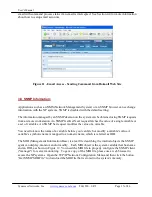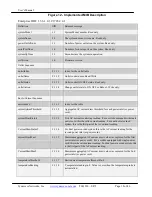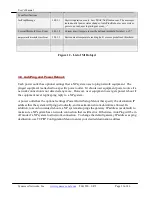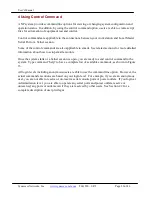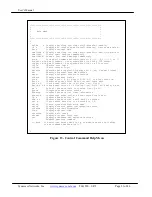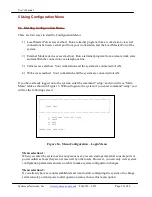
User’s Manual
Synaccess Networks, Inc.
www.synaccess-net.com
(760) 930 – 0473 Page 14 of 46
terminal connector. Since the system’s Local Master Port and Modem device ports are not
complementary (both are DCE ports); you need to use a NULL Modem cable with both male
connectors.
Figure 7 - External Modem Connection
3.5 Telnet Access:
Operation of on a Telnet terminal is almost identical to the access method via Local Master Serial
Port. You need to make sure that Telnet access is enabled, as a default setting. If the access is not
enabled, please refer to Section “Using Configuration Menu” to change the setting.
Before you start the Telnet application, you need to obtain the actual IP address for the system. The
system displays network connectivity information at system startup terminal when your workstation
is connected to the system’s Local Master Serial Port. Please refer to “TCP/IP Network
Configuration” section of this document for information on how to setup the network parameters.
Once the network connection is established, at your workstation prompt, you need to enter:
telnet ip_addr
The telnet terminal screen will display the following message once it starts, shown in Figure 8. You
need to set a Telnet session on your workstation to Local Echo Off mode.
Telnet session permits an anonymous user who may only to view the system settings and operate
unreserved power outlets and user serial console ports. Please refer to section 2.2 “User privileges
and Port Reservations” for further information.
Only one Telnet session may be active at the time. Telnet sessions will be refused by the
system if it already has a Telnet session active.
A Telnet session remains active for 10 minutes if it is in idle state.
Telnet access methods can be enabled or disabled using the System Access Setup Menu.
To terminate an active Telnet session, use the command “logout” at the terminal. If you are
at a serial port terminal and notice that the terminal is disabled because it is taken over by a

















